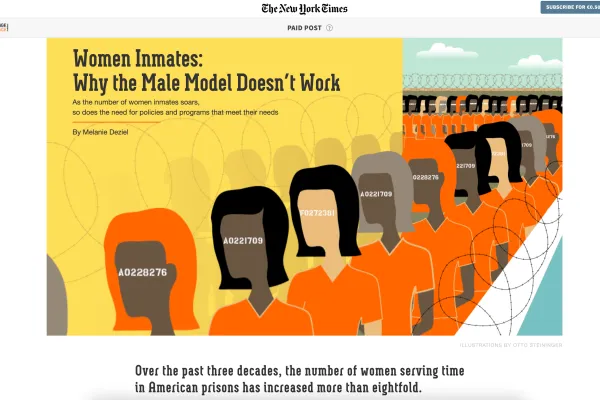Reluctance or maybe even downright scepticism is apparently still what publishers risk facing when producing native advertising solutions for clients.
'Convincing advertisers to tell real stories' is seen as the biggest challenge regarding native advertising, according to two global surveys on the magazine industry and on the news media industry that NAI did in cooperation with FIPP and INMA. This was the case in both 2016 and 2017.

How do you overcome that challenge -- and are advertisers sometimes right not to go on the storytelling? We asked Melanie Deziel who is an award-winning branded content strategist, founder of The Overlap League and the first Editor of Branded Content at The New York Times.
The need to see conversions can create a "salesy" feel.
Do you recognize the challenge of convincing advertisers to tell real stories from your own experiences?
"I've absolutely seen advertisers struggle to tell authentic stories before. It's certainly a real challenge, and most often for those advertisers who are new to native advertising or those who have.
But it's rare that they don't see the value in stories. More often it's the processes or priorities that take the lead in more direct response marketing programs such as banner ads, direct mail, coupon promotions, etc. that carry over to native ad programs and get in the way of letting the story take the lead.
RELATED: 5 Ways to Convince Brands to Tell Real Stories
Sometimes when the budgets for native ad programs come from a product launch or are led by a sales-focused team, the need to see conversions can force the product to a more prominent — and perhaps less natural —place in the story creating a forced and "salesy" feeling.
Other times, particularly in heavily regulated industries like finance or pharmacy legal concerns or risks about privacy are of the utmost concern to marketers. As a result, the natural flow of the story sometimes falls to the wayside in favour of ultra-clear disclosures, asterisks, and fine print."
Not every native ad program calls for an edgy piece with minimal branding and a story at the center.
How do you suggest that publishers go about the 'convincing' of advertisers?
"I think it's important for publishers and publishing-side content studios to feel empowered by being honest and open with their brand partners on the impact that their requests for more branding can have on a piece.
Advertisers partner with publishers because they are specifically looking for storytelling expertise. So we'd be remiss if we sidestepped our storytelling best practices without warning them first simply because we didn't want to rock the boat.
Let them know that you can, for example, make that logo bigger or include another reference to the brand, but that readers will likely find it unnatural and you recommend keeping it as is. Most often, advertisers will appreciate your honesty and come to trust your instinct. At least, if they choose not to take your advice, they're doing it with the correct information and an understanding of the potential consequences for performance.
Ultimately, though, not every native ad program calls for an edgy piece with minimal branding and a story at the centre. More branded "advertorial" pieces are still a huge business. Especially in technical and highly regulated fields where advertisers are more comfortable retaining control and in local publishing markets where publishers may not have resources to create bespoke content.
These advertorial pieces allow advertisers who are not yet ready or able to step outside their own story to have a hand at speaking to readers directly. And while that content is not always the most engaging, compelling, or differentiated, it does help marketers start to think about the role that storytelling can play in their efforts.
Hopefully, it helps them increase their comfort levels so that they can begin to tell less and less branded stories (that focus more on their consumers) down the line."
Personally, I think any brand is capable of telling a compelling story that provides new and interesting information to their consumers.
Are there even products or brands who are not fit for native advertising, in your opinion
"Personally, I think any brand is capable of telling a compelling story that provides new and interesting information to their consumers. That said, I recognize it is much more difficult for some types of brands to accomplish these programs than others such as:
Advertisers in heavily regulated industries like finance, pharmacy, and healthcare have strict limits on the things they can say, the information they can share, and the recommendations they can make; these limits can sometimes make "natural" storytelling difficult—or at the very least; complicated.
For brands that do work on behalf of other groups or brands—such as tourism boards, unions, non-profits, political groups and other collectives—coordinating a single content piece and getting buy-in from all stakeholders may be more difficult than for other brands.
Alcohol advertisers and others that have the be aware of age restrictions on their content viewing may be rightfully wary about certain types of content, certain stories, or promoting their content in certain contexts."
This interview was first published in September 2016.
 By
By 



